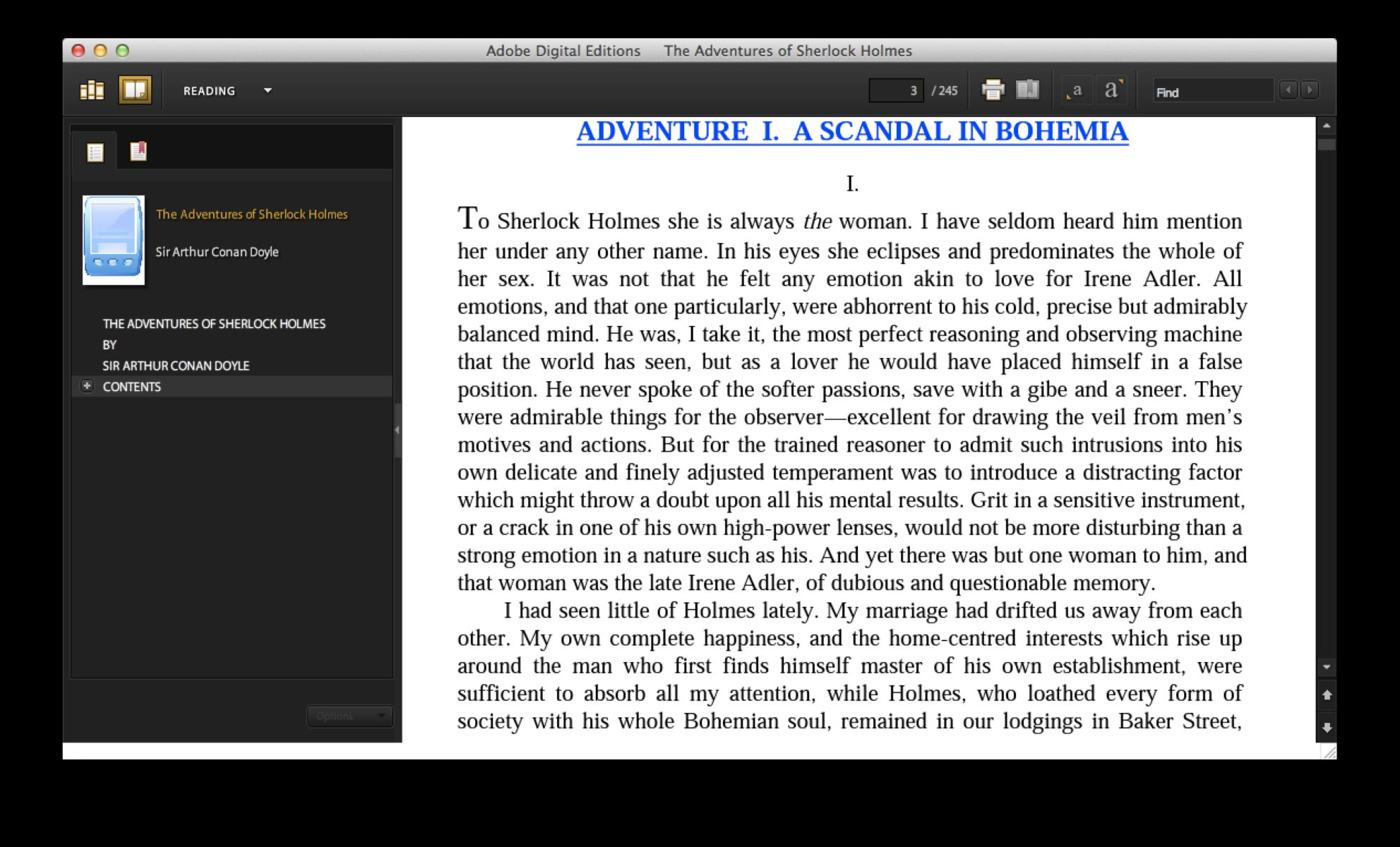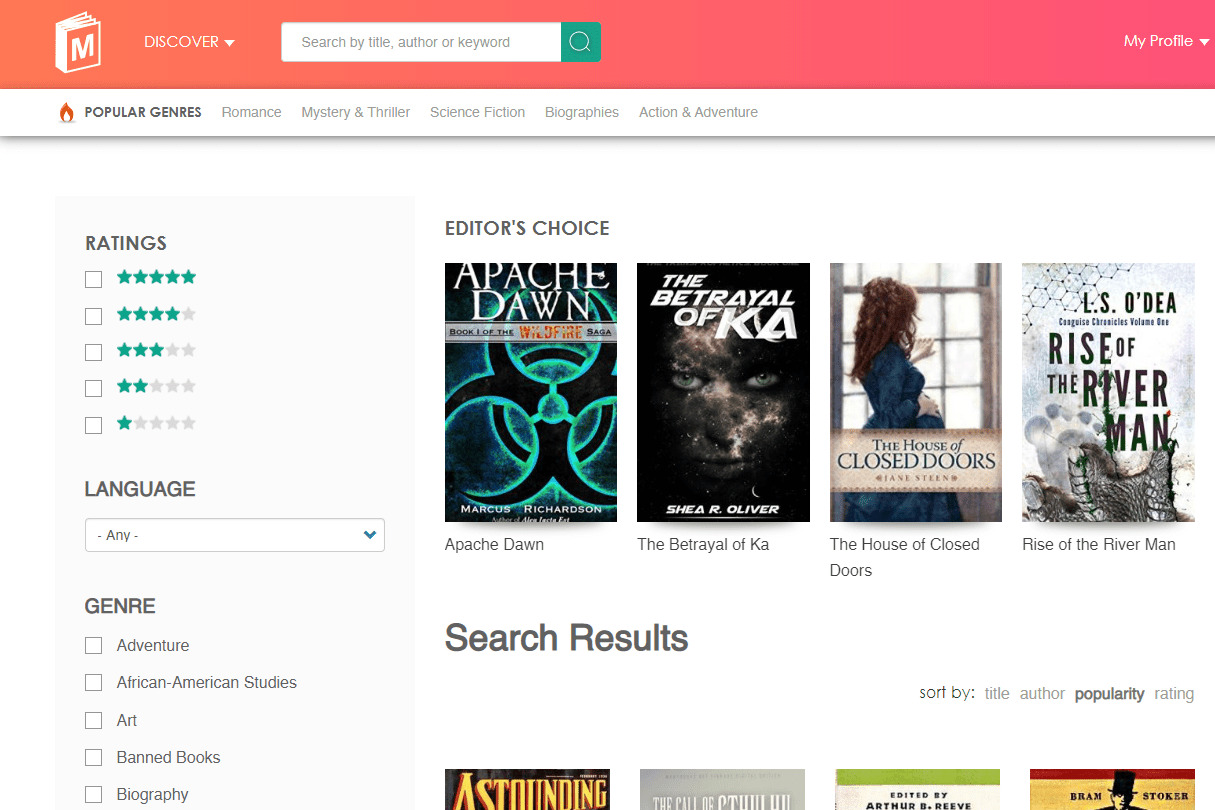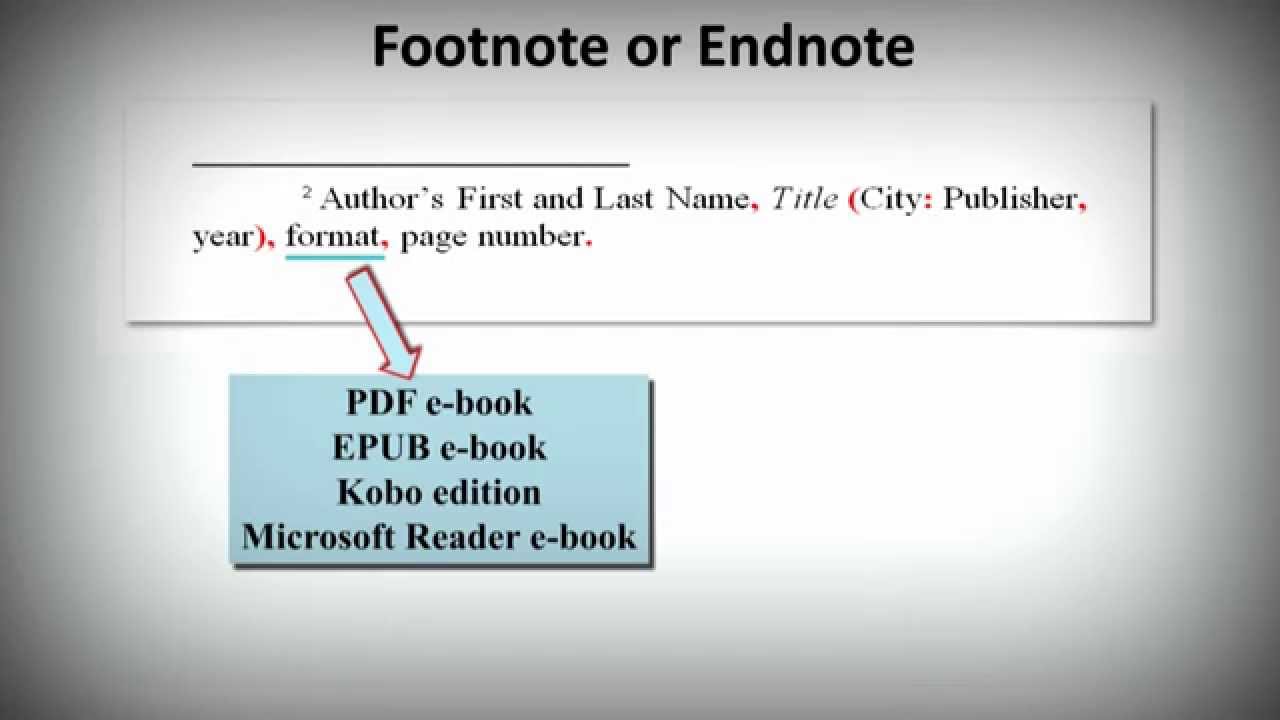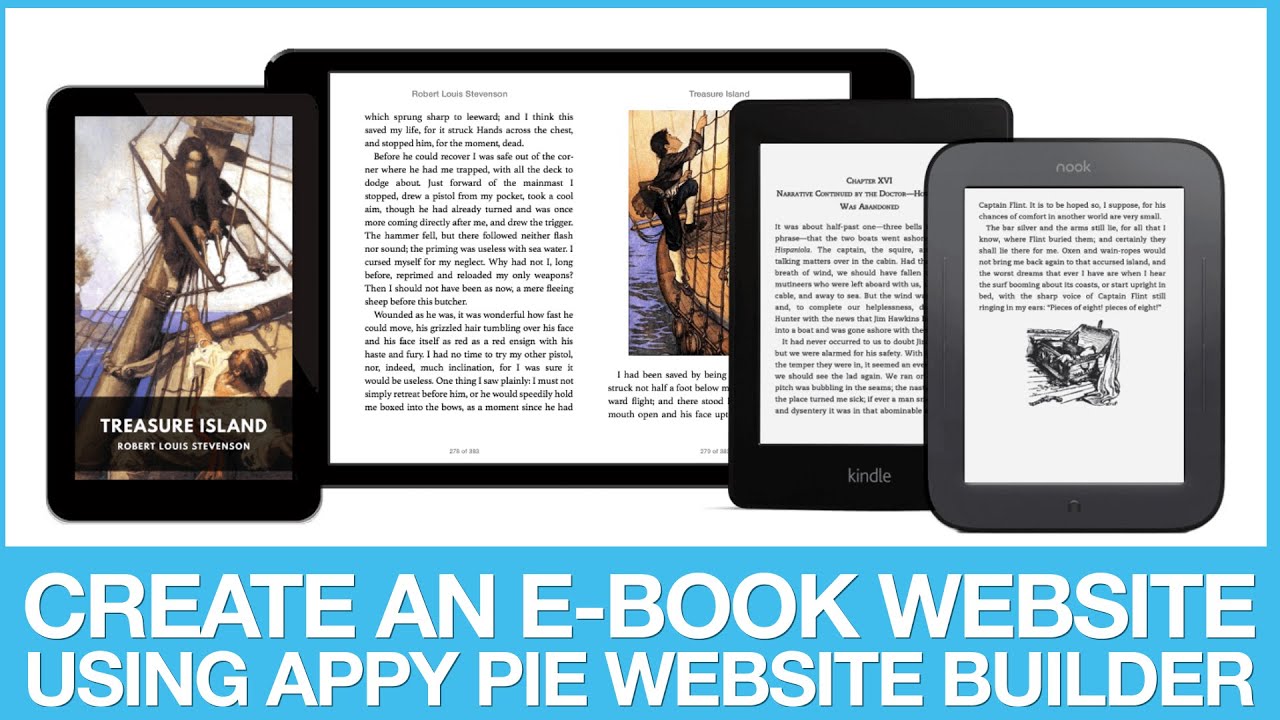Introduction
An eBook is a valuable tool for sharing knowledge, stories, and information in a digital format. However, many authors and publishers struggle with determining the appropriate length for their eBook. Should it be short and concise, or long and comprehensive? The answer depends on a variety of factors, including the purpose of the eBook, the target audience, and the content being covered.
In this article, we will explore the different factors to consider when determining the length of an eBook, and discuss the pros and cons of both shorter and longer eBooks. Additionally, we will look at the average eBook lengths for various genres and provide tips on how to decide the ideal length for your specific eBook.
Whether you have a wealth of information to share or want to keep it succinct and to the point, finding the right balance between content and reader engagement is crucial. Let’s dive in and discover how to determine the perfect length for your eBook.
Factors to Consider When Determining the Length of an eBook
When deciding on the length of your eBook, it’s important to take into account several key factors that will impact the reader’s experience and the overall success of your publication. Here are some considerations to keep in mind:
- Content Complexity: Consider the complexity of the subject matter you’re covering. If it’s a simple concept that can be explained concisely, a shorter eBook may suffice. However, if the topic requires in-depth explanations and examples, a longer eBook may be necessary to provide a comprehensive understanding.
- Audience Engagement: Who is your target audience? Are they seeking quick answers and actionable tips, or are they looking for a deep dive into a particular subject? Understanding your readers’ preferences will help you determine the appropriate length to keep them engaged without overwhelming them.
- Goals and Purpose: What is the main goal of your eBook? Are you looking to provide a general overview or offer in-depth expertise? Having a clear purpose will guide you in determining the necessary length to achieve your objectives.
- Market Research: Researching your target market can provide valuable insights. Look at the length of successful eBooks in your niche and analyze customer feedback to gauge reader expectations. Keep in mind that different genres and industries may have different standards for eBook length.
- Formatting Preferences: Consider how you want to present your content. Do you want your eBook to be a quick read with bullet points and concise sections, or would you like to include more in-depth analysis and storytelling? Your formatting preferences will influence the length of your eBook.
- Reader Value: Ultimately, you want to create an eBook that delivers value to your readers. It’s crucial to strike a balance between providing enough information to satisfy their needs while avoiding unnecessary fluff or repetition.
By taking these factors into consideration, you can make an informed decision about the appropriate length of your eBook. It’s essential to remember that there is no one-size-fits-all approach, as every eBook is unique and tailored to its specific purpose and audience.
Finding the Right Balance Between Content and Reader Engagement
When it comes to eBook length, it’s crucial to strike the right balance between providing valuable content and engaging your readers. Here are some strategies to help you achieve this:
- Focus on Quality over Quantity: Instead of trying to reach a specific word count, prioritize the quality of your content. Ensure that every chapter, section, or paragraph serves a purpose and adds value to the reader’s experience.
- Break It Down into Digestible Sections: Long blocks of text can be overwhelming for readers. Break down your eBook into smaller, easily digestible sections or chapters. This will make it easier for readers to navigate through the content and stay engaged.
- Utilize Graphics and Visuals: Incorporating images, diagrams, charts, or infographics can enhance the visual appeal of your eBook and aid in conveying complex information. Visuals can break up lengthy text and make the content more engaging and easy to understand.
- Add Interactive Elements: Consider adding interactive elements such as quizzes, worksheets, or links to external resources. This can boost reader engagement and encourage active participation, enhancing the overall eBook experience.
- Include Real-Life Examples and Case Studies: Stories and real-life examples can captivate readers’ attention and help them relate to the content. By incorporating relevant case studies or personal anecdotes, you can make your eBook more engaging and memorable.
- Use Clear and Conversational Language: Write in a conversational tone to connect with your readers and make the content more approachable. Avoid jargon or technical terms unless necessary, and ensure that your language is clear, concise, and easy to understand.
- Seek Feedback from Beta Readers: Before publishing your eBook, consider sharing it with a group of beta readers who can provide valuable feedback. Their insights can help you identify areas where the content may be too lengthy or where they may need more clarification.
Remember, every eBook is unique, and what works for one may not work for another. Experiment with different strategies and gauge reader feedback to find the right balance that keeps your audience engaged while providing them with valuable content.
Short eBooks: Pros and Cons
Short eBooks, typically ranging from 10 to 50 pages, have gained popularity in recent years. They offer a condensed and concise format that appeals to readers who are seeking quick answers or digestible information. Here are some pros and cons of short eBooks:
- Pros:
- Quick and Easy to Consume: Short eBooks are ideal for readers who have limited time or want to get to the point quickly. They provide concise information without overwhelming the reader with unnecessary details.
- Budget-Friendly: For authors or publishers, producing a short eBook is often faster and more cost-effective compared to longer and more complex publications.
- Targeted and Specific: Short eBooks allow authors to focus on a specific aspect of a topic, making them ideal for niche subjects or addressing a particular problem or question.
- Lead Generation: Offering a short eBook as a lead magnet can attract potential customers to your website or email list, allowing you to build relationships and promote your other products or services.
- Cons:
- Limited Depth: Due to their brevity, short eBooks may not have the depth or scope to cover a topic extensively. In-depth analysis or complex subjects may require a longer format.
- Less Perceived Value: Some readers may associate short eBooks with less value, expecting more comprehensive and detailed information. It’s important to manage readers’ expectations and clearly communicate the benefits of the content.
- Less Room for Expansion: If your eBook gains traction and readers want more information, a short eBook may limit your ability to expand on the topic or offer additional resources.
Short eBooks can be an effective way to deliver focused and easily digestible content to your readers. However, it’s essential to carefully evaluate your topic and audience to ensure that a shorter format suits your goals and provides sufficient value.
Long eBooks: Pros and Cons
Long eBooks, typically ranging from 100 to 500 pages or more, offer a more comprehensive exploration of a topic. They are often favored by readers who are looking for in-depth knowledge and a thorough understanding. Here are some pros and cons of long eBooks:
- Pros:
- Extensive Coverage: Long eBooks have the space to delve deeply into a subject, providing detailed explanations, case studies, and comprehensive analyses. They offer a thorough understanding of complex topics.
- Establish Expertise: A long eBook allows you to showcase your expertise and position yourself as an authority in your field. Readers are more likely to view you as a credible source of information if you offer a well-researched and comprehensive eBook.
- Value for Money: Some readers perceive longer eBooks as offering more value for their investment. They feel they are getting a comprehensive resource that covers a wide range of information on the topic.
- High Perceived Value: Long eBooks are often associated with thorough research and detailed insights, making them more appealing to readers who are seeking comprehensive knowledge.
- Cons:
- Time Investment: Writing a long eBook requires a considerable time commitment. It’s important to ensure that the content you provide is engaging and valuable throughout the entire length to keep readers engaged.
- Potential for Information Overload: If not well-structured, long eBooks can overwhelm readers with excessive information. It’s essential to break the content into logical sections, use subheadings, and provide clear navigation to help readers navigate the eBook easily.
- Higher Production Costs: Longer eBooks may require a higher investment in editing, formatting, and design, increasing the overall production costs.
Long eBooks can be a powerful tool for conveying comprehensive knowledge and establishing yourself as an expert. However, it’s crucial to carefully plan and structure your eBook to ensure that it remains engaging, organized, and valuable throughout its length.
Average eBook Lengths for Different Genres
The ideal length for an eBook can vary depending on the genre or industry it belongs to. While there are no hard and fast rules, it can be helpful to consider the average eBook lengths for different genres as a general guideline. Here are some approximate average lengths for common genres:
- Fiction: Most fiction eBooks typically fall within the range of 50,000 to 100,000 words. However, genres such as romance and mystery tend to have slightly shorter eBooks, while epic fantasy or historical fiction can be longer.
- Non-Fiction: Non-fiction eBooks can vary widely in length, depending on the subject matter. Self-help and personal development eBooks are often around 30,000 to 60,000 words. Business and finance eBooks can range from 40,000 to over 100,000 words, as they require more detailed explanations and case studies.
- Biography/Memoir: Biography and memoir eBooks are typically around 70,000 to 100,000 words, as they delve into personal experiences, events, and reflections of the author’s life.
- Self-Help: Self-help eBooks usually aim to provide actionable knowledge and practical advice. They tend to be around 30,000 to 50,000 words, offering enough content to address the topic thoroughly while remaining concise and focused.
- Technical/How-To: Technical and how-to eBooks require detailed explanations and step-by-step instructions. They can range from 20,000 to 80,000 words, depending on the complexity of the subject matter and the level of detail required.
It’s important to note that these average lengths are not strict rules but rather serve as a reference point. Your eBook’s length may vary based on your specific content, writing style, and audience expectations. Conducting market research and analyzing successful eBooks within your genre can provide additional insight into the appropriate length for your eBook.
How to Decide the Ideal Length for Your eBook
When determining the length of your eBook, it’s crucial to consider various factors specific to your content, audience, and goals. Here are some key steps to help you decide the ideal length:
- Define Your Purpose: Clarify the main objective of your eBook. Are you providing a comprehensive guide, a quick reference, or a deep exploration of a specific topic? Knowing your purpose will guide you in determining the necessary length.
- Research Your Target Audience: Understand the preferences and expectations of your target audience. Are they looking for detailed information or quick insights? Analyze their needs and determine the length that aligns with their expectations.
- Outline Your Content: Create an outline of your eBook, organizing the topics, chapters, and sections you plan to cover. This will give you a visual representation of the scope of your content and help you estimate the necessary length.
- Consider Complexity: Evaluate the complexity of your subject matter. Will it require in-depth explanations and examples, or is it more straightforward and concise? This will impact the depth and length of your eBook.
- Set Realistic Goals: Consider the time and resources you have available to dedicate to your eBook. A longer eBook may require more research, writing, and editing. Set realistic goals that align with your abilities and availability.
- Seek Feedback: Share your outline or a draft of your eBook with beta readers or trusted colleagues. Gather feedback on its length and content. They can provide valuable insights and suggestions to help you determine if the length is appropriate or needs adjustments.
- Edit and Revise: Once you have a draft of your eBook, review it critically. Assess whether any sections can be trimmed or if additional content is necessary to enhance the reader’s understanding. Be willing to make changes to maintain the ideal length.
Remember, the ideal length of an eBook is a delicate balance between providing valuable content and keeping your readers engaged. By following these steps and considering the unique aspects of your eBook, you can make an informed decision on the length that aligns with your goals and resonates with your target audience.
Tips for Writing a Concise eBook
Writing a concise eBook requires careful planning and effective communication. Here are some valuable tips to help you create a concise eBook that engages readers and delivers the desired information:
- Define Your Goals: Clearly define the goals and objectives of your eBook. Identify the key messages you want to convey and focus on delivering them concisely.
- Create a Clear Structure: Outline your eBook beforehand to create a logical and organized structure. This will help you stay focused and eliminate irrelevant information.
- Be Selective with Content: Evaluate the relevance of each piece of information you include. Only include content that directly supports your objectives and adds value to your readers.
- Avoid Repetition: Repetition can make your eBook longer and less impactful. Review your content to eliminate redundant statements or examples.
- Use Clear and Precise Language: Choose your words carefully to convey information efficiently. Be concise in your explanations and avoid using unnecessary jargon or technical terms.
- Focus on Actionable Advice: Provide practical and actionable advice that readers can implement immediately. This will add value to your eBook while keeping the content concise and purposeful.
- Utilize Formatting Techniques: Make use of bullet points, subheadings, and lists to break up chunks of text and improve readability. This will help readers easily digest the information and navigate through the eBook.
- Edit Ruthlessly: Review your eBook multiple times with the intention of eliminating unnecessary words, sentences, or paragraphs. Be ruthless in your editing to ensure a concise final product.
- Get Feedback: Share your eBook with beta readers or trusted colleagues to get their feedback. Ask for their input on areas where the content can be refined or condensed.
Remember, the key to a concise eBook is efficiency and clarity. Focus on providing valuable content in a succinct manner, and your readers will appreciate the clarity and accessibility of your eBook.
Tips for Writing a Comprehensive eBook
Writing a comprehensive eBook involves thorough research, detailed explanations, and comprehensive coverage of the subject matter. Here are some tips to help you create a comprehensive eBook that provides a deep understanding of your topic:
- Research Extensively: Conduct thorough research to gather reliable and relevant information. Explore multiple sources, including books, scholarly articles, and trusted websites, to ensure that your eBook is well-informed and comprehensive.
- Create an Outline: Develop a detailed outline that outlines the key chapters, sections, and subtopics you plan to cover. This will provide structure and ensure that you cover all necessary aspects of your topic.
- Organize Your Content: Arrange your content in a logical and cohesive manner. Use headings and subheadings to create a clear hierarchy that guides readers through the eBook, making it easier for them to navigate and comprehend the information.
- Use Examples and Case Studies: Incorporate real-life examples, case studies, and anecdotes to illustrate key points and enhance the reader’s understanding. Concrete examples can make your eBook more engaging and relatable.
- Provide In-Depth Explanations: Don’t shy away from diving into complex concepts or theories. Provide in-depth explanations and break down complex information into digestible chunks to ensure that readers grasp the content fully.
- Include Visuals and Graphics: Visual aids such as diagrams, charts, and infographics can complement your text and enhance the comprehensibility of your eBook. Utilize visuals to present complex data or concepts in a more accessible manner.
- Offer Additional Resources: Provide readers with additional resources such as recommended books, websites, or further reading suggestions. This demonstrates thoroughness and gives readers the opportunity to explore the topic further.
- Edit Diligently: Comprehensive eBooks tend to be lengthier, so it’s essential to edit diligently. Strive for clarity and conciseness, and eliminate any unnecessary repetition or tangents that could distract readers from the main content.
- Get Feedback: Share your eBook with beta readers or subject matter experts to get their feedback. Ask for their input on areas where you can further improve the comprehensiveness of your eBook.
Creating a comprehensive eBook requires diligence, attention to detail, and a commitment to providing in-depth knowledge to your readers. By following these tips, you can craft an eBook that becomes a valuable resource and a go-to reference in your field.
Formatting and Design Considerations for eBooks of Varying Lengths
Proper formatting and design play a crucial role in optimizing the readability and user experience of your eBook, regardless of its length. Here are some considerations to keep in mind when formatting and designing eBooks of varying lengths:
- Consistent Formatting: Maintain a consistent formatting style throughout your eBook, including font styles, sizes, headings, and subheadings. Consistency helps create a cohesive and professional look.
- Clear Navigation: Ensure that readers can easily navigate through your eBook by including a table of contents that links to specific sections or chapters. This facilitates quick access to desired information.
- Chapter Breaks: Clearly indicate chapter breaks with page breaks, chapter titles, and perhaps even introductory quotes or images. This helps to define each section and aids in effortless navigation.
- White Space: Incorporate sufficient white space throughout your eBook to enhance readability. Avoid cluttered paragraphs and consider using bullet points, subheadings, and shorter paragraphs to break up the text.
- Fonts and Typography: Opt for legible fonts that are easy to read on various devices. Use bold or italics sparingly for emphasis, and ensure that your text is large enough to be readable on smartphones and tablets.
- Visual Elements: If appropriate for your content, include relevant images, illustrations, or graphs to enhance understanding and engagement. Ensure that these visuals are of high quality and optimized for digital viewing.
- Hyperlinks: If you reference external resources or want to provide readers with additional information, consider adding hyperlinks within the eBook. This makes it easy for readers to access external content with a simple click.
- Testing and Proofreading: Before publishing, thoroughly test your eBook to ensure that all formatting, layout, and design elements appear correctly on various devices and eReader platforms. Additionally, proofread your content to eliminate any typographical errors or inconsistencies.
- Professional Design: If design is not your forte, consider hiring a professional eBook designer to ensure that your eBook appears polished and visually appealing. Professionally designed eBooks not only enhance the reading experience but also help establish credibility.
The formatting and design considerations mentioned above apply to eBooks of any length. Strive to create an eBook that is visually appealing, easy to navigate, and optimized for readability on different devices. A well-designed eBook can enhance the overall experience and make your content more enticing to readers.
Conclusion
Determining the ideal length for your eBook is a crucial decision that can greatly impact its success. Factors such as content complexity, audience engagement, goals, and formatting considerations all play a role in finding the right balance. Whether you choose to create a concise eBook or a comprehensive one, following the tips provided will help you create a valuable and engaging reading experience for your audience.
Remember, there is no one-size-fits-all answer to the ideal eBook length. It ultimately depends on your specific content, target audience, and objectives. By considering these factors, conducting market research, and seeking feedback, you can make an informed decision that aligns with your goals and meets the needs of your readers. Additionally, paying attention to formatting and design will enhance the readability and visual appeal of your eBook, regardless of its length.
So, take the time to evaluate your content, understand your audience, and consider the purpose of your eBook. With careful planning and implementation, you can create an eBook that provides value, engages readers, and solidifies your reputation in your chosen field. Happy writing!

























